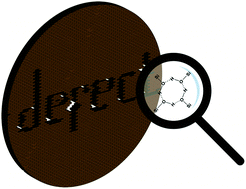Consequences of secondary zeolite growth on catalytic performance in DMTO studied over DDR and CHA†
Abstract
Zeolites with DDR (Sigma-1 and ZSM-58) and CHA (SSZ-13) topology were synthesized by seed assisted and direct hydrothermal synthesis in order to investigate the effects of fast crystal growth on catalytic performance. Application of small amount of seeds (0.1% wt) significantly reduced synthesis time of all the studied zeolites. XRD and NH3-TPD analyses did not reveal any difference in crystallinity and acidity. On the other hand, IR spectroscopy clearly demonstrates the presence of multiple defects, internal silanols (3729 cm−1) and silanol nests (3400 cm−1), as a result of accelerated crystal growth kinetics. Comparison of catalytic properties in the dimethyl ether to olefins (DMTO) reaction at 400 °C and 450 °C revealed that, despite smaller crystal sizes, zeolites prepared by secondary growth display shorter lifetimes due to faster coking rates, the latter being a result of silanols promoting hydrogen transfer reactions. Fluoride treatment of CHA removed silanols and prolonged its lifetime. This work highlights the importance of zeolite quality for catalytic application and the necessity to optimize current synthetic protocols based on secondary growth.



 Please wait while we load your content...
Please wait while we load your content...